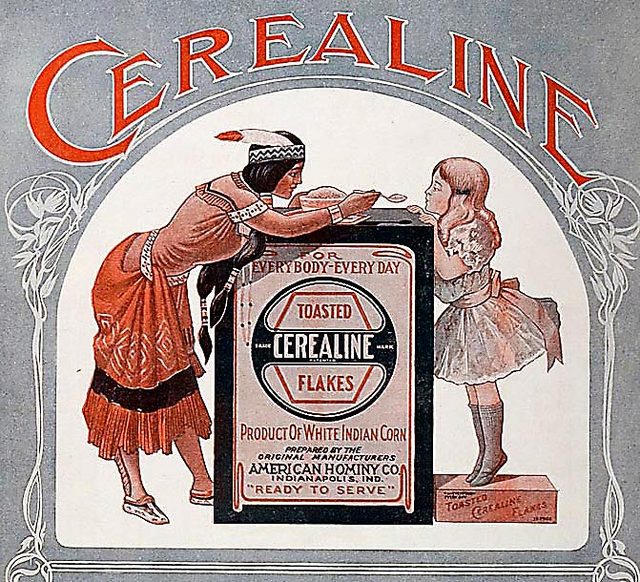Marking Cerealine

Coming soon to the Indiana State Historical Marker collection is “Cerealine Manufacturing Company.” IHB marks a lot of people, events, and places, but food processors and even mills are a relative rarity. This Columbus, Indiana company created one of the earliest shelf-stable convenience foods for international consumers, a hot breakfast cereal made from the starchy part of white corn. The product was also used as a cheap, time-saving alternative to malt and had a profound positive impact on the brewing industry. Cerealine Manufacturing generated a daily demand for thousands of bushels of corn, supporting Indiana agriculture.
When researching a business, we start with a fairly standard list of questions:
- Who created the company? Why?
- What was the company producing? What were the raw materials?
- When did the company incorporate? When did it close?
- Where was the company headquartered? Where did manufacturing take place?
- How many were employed? How much was sold?
With a very thorough marker applicant, the existence of Cerealine, and a basic timeline, were already in place when I began researching the topic to prepare a marker text. In digging deeper, I discovered some interesting things about turn-of-the-century food culture, business history, and economic theory. I also got distracted.
Distracted with what? Mostly, a bunch of personal questions and plain old curiosity. Who were these business partners? I knew their names, but I wanted to know where they lived, how old they were, and what they brought to the partnership. How did they meet and what kind of personalities did they have? I was able to form a working theory about why Joseph Gent was brought into the company as a partner (he was a prolific inventor of milling machinery). But, I simply couldn’t figure out what happened to Mr. Rush, who had partnered with Thomas Gaff and Richard Thomas on their earlier milling projects.
Cerealine later merged into a conglomerate, and my curiosity prodded at me to explore why. Who came up with the idea to form American Hominy? What kind of debate went on behind the scenes? Did Mrs. Gent, Mrs. Gaff, or Mrs. Thomas have to uproot their families in order for Cerealine to move to Indianapolis in the early 1890s?
In the case of Cerealine, most of these questions remain unanswered. With only about 100 words to tell the entire story of a person, or place, or thing, it becomes apparent at some point during research that every question cannot be pursued. Genealogy, for example, was interesting, but after a few hours of digging after confusing leads, the marker team determined that the marital status of one of the business partners, or their street addresses over time, was tangential to the story of the company itself and its impact on the state and the world.
There are some questions that still plague me, even now that the draft text is in the final stages of editing. The complete story of the Cerealine-American Hominy merger might hold examples to support any one of the many “merger wave” theories put forth by economic historians. Unfortunately, business records for Cerealine Manufacturing Company have either not been preserved or not been archived, and neither has the relevant personal correspondence of the partners. Much of what I know about day-to-day operations at Cerealine Manufacturing was reported in newspapers, agricultural journals, or in their own advertisements.
It would also be really nice to be able to answer the question I’m certain every reader of the soon-to-be marker will ask: “What did Cerealine taste like?” To date, no experimental archaeologists have taken on the task of recreating Joseph Gent’s manufacturing apparatus and bringing the product back to market. No intrepid eBay sellers have an unopened box to offer (yes, I checked).
I’m sad to report that we may never know the complete and unabridged story of the Cerealine Manufacturing Company. But, the marker will serve as a reminder to me that if your research is thorough, in the absence of the whole story, you can still say something.

